
If today’s title has you thinking of crackin’ open a cold one in a hammock under a shady palm on a sandy white beach somewhere next to the rolling, rhythmic, waving ocean, well… there’s nothing wrong with that!
But it’s not what I meant. LoL
I’m talkin’ about what many of us aspire to that’s located around our own personal “naval academy”…
I’m talkin’… ABS of STEEL!!
Why do I want to play a song about being super-FIT on my Kala ukulele?? Ahhh, therein lies a tale…
Work it, baby!
Because of the economic downturn of 2008, a lot has changed… for MANY of us.

I, for example, have taken on a great position at a local fitness spa due to the departure of the music and acting/film work that used to be here in the Detroit region.
I’m an avid runner, so it’s a good fit for me.
Being the type of guy who incorporates music into pretty much everything I do, my methods at the Club have proven no different. Pretty much everybody I’ve spent time with there has heard me play a song.
And most of the time… it’s on my Kala ukulele!
I chose it for two good reasons:
- The uke is small and doesn’t take up much room in my office, and
- No one can resist the urge to smile and feel good when someone is playing uke in front of them!
Both have proven to be true, so much so that I’m asked all the time to play it for any & every possible celebratory reason the upper management can come up with.
In short – I’m the go-to music dude.

The fact that the uke also quickly and effectively lowers defenses and puts people in a great mood also REALLY helps my bottom line. Simply put, when people are in a good mood… they spend more!! LOL
So, yea, my Kala uke shall always remind me of endless conversations about fitness, health, exercise and striving for that elusive 6-pack…
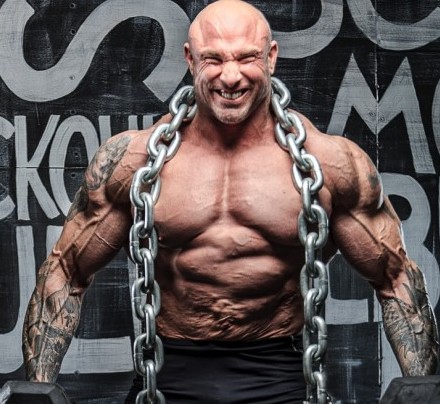
… the one that you CAN’T get in the “Chains” section at Target! 😉
Spec’ it!
Let’s first take a look at what this fine uke consists of…
The Kala KA-FMTG Tenor Ukulele Specs:

SIZE: Tenor
TOP: Solid Sitka Spruce
BACK & SIDES: Spalted Maple
BINDING: Maple
SOUNDHOLE ROSETTE: Abalone
NECK: Mahogany
FRETS: 18
FINISH: Gloss
FINGERBOARD: Laurel? Walnut? Rosewood?? It’s been made with all of ’em!
INLAY: Dots
HEADSTOCK: Standard
TUNERS: Die cast chrome, sealed & geared
STRINGS: Aquila Super Nylgut®
BRIDGE: Rosewood
ELECTRONICS: N/A
NUT & SADDLE: Graph Tech NuBone®
COUNTRY OF ORIGIN: China
Measurements:
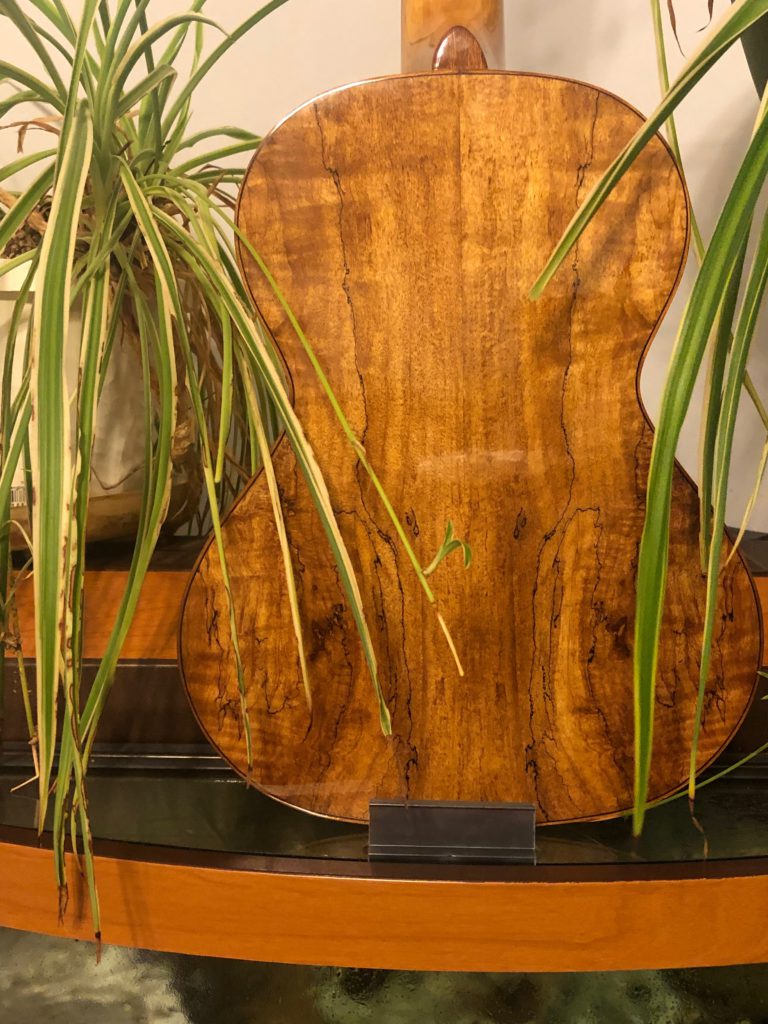
Overall Instrument Length: 26.125″
Scale Length: 17″
Body Length: 11.75″
Number of Frets: 18″
Width at Upper Bout: 7″
Width at Lower Bout: 9.125″
Width at Waist: 5.5″
Body Depth: 3.12″
Fingerboard Width at Nut: 1.39″
Fingerboard width at neck/body joint: 1.8″
Watch it!
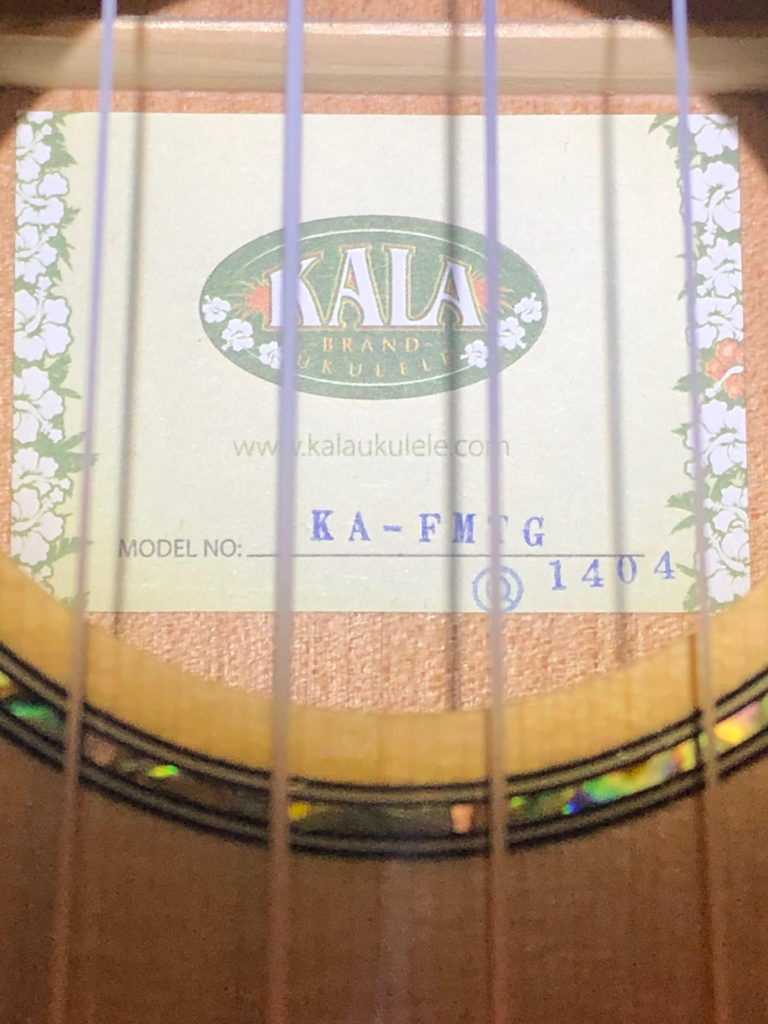
If we take a look at just the visual appeal of this FMTG model by Kala, it immediately says, “I’m not your ordinary, run-of-the-mill ukulele!
The wood on it is beautiful. It is Spalted Maple. “Spalted” is just a fancy word for the dark grain ribbons that emphasize where the wood has started to decompose, actually.
But fear not! It’s not going to stink or break apart from age! It’s strong, solid and much more interesting pattern-wise than new, fresh, still-growing Maple. Or at least I think so.
Now for a little controversy…
(Buckle up… it’s about to be a throw-down!!)
If you follow THIS LINK to the description of this model as it’s being sold TODAY, you’ll notice it says that it’s made of “Flame Maple”.
Sorry, but no. There’s no way that’s flamed Maple. Not even close.
I own the instrument, plus I’ve looked at all the pictures in all ads for this instrument online, every store I could think of, so I think I can say, with good authority, that the back and sides look nothing like Flame Maple at all. They are clearly SPALTED Maple.
Even the KALA WEBSITE HERE shows that it’s clearly Spalted.
To give you some idea of how to tell the difference between Spalted and Flamed Maple, let’s use pictures.
First up is a REAL Flamed Maple Uke, also made by Kala:

And here’s another flamed maple uke, this time made by Ibanez:
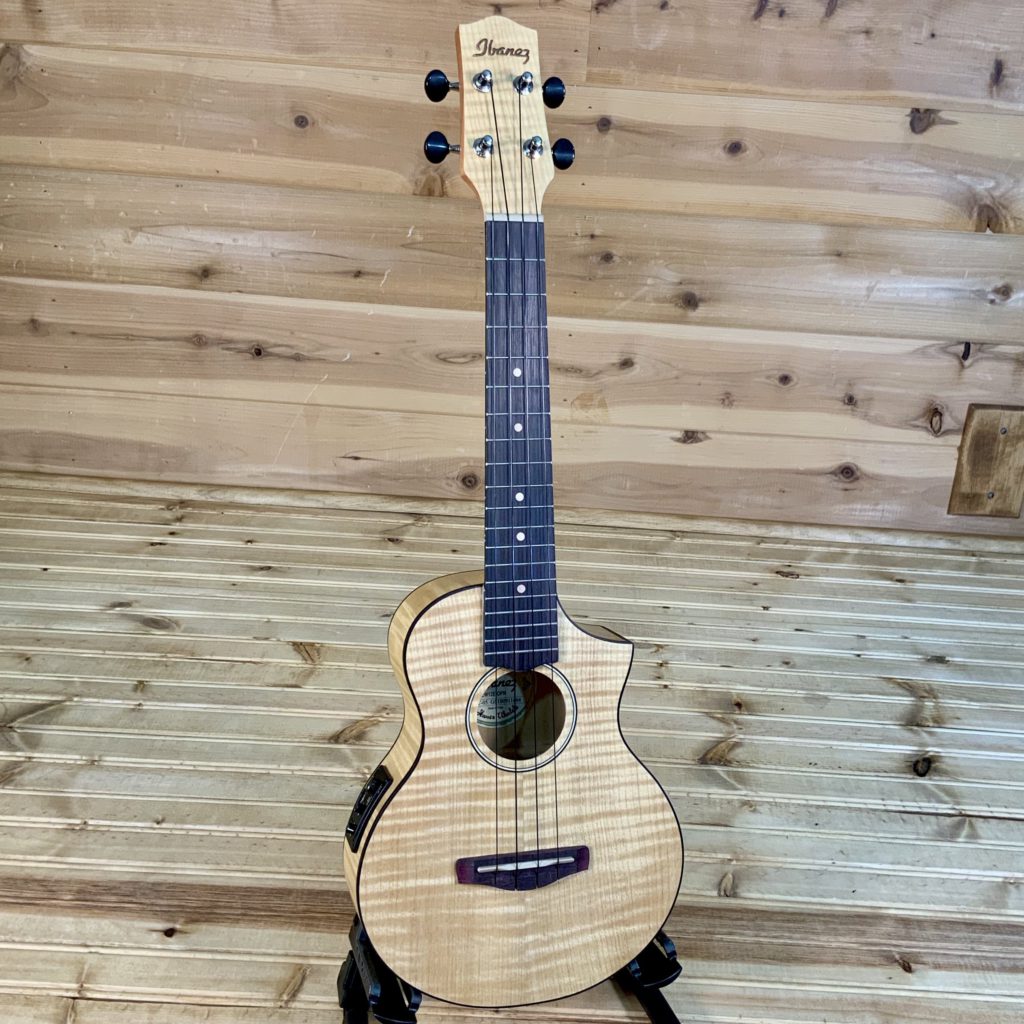
Now here’s a close-up of the spalted wood sides on the Kala KA-FMTG:
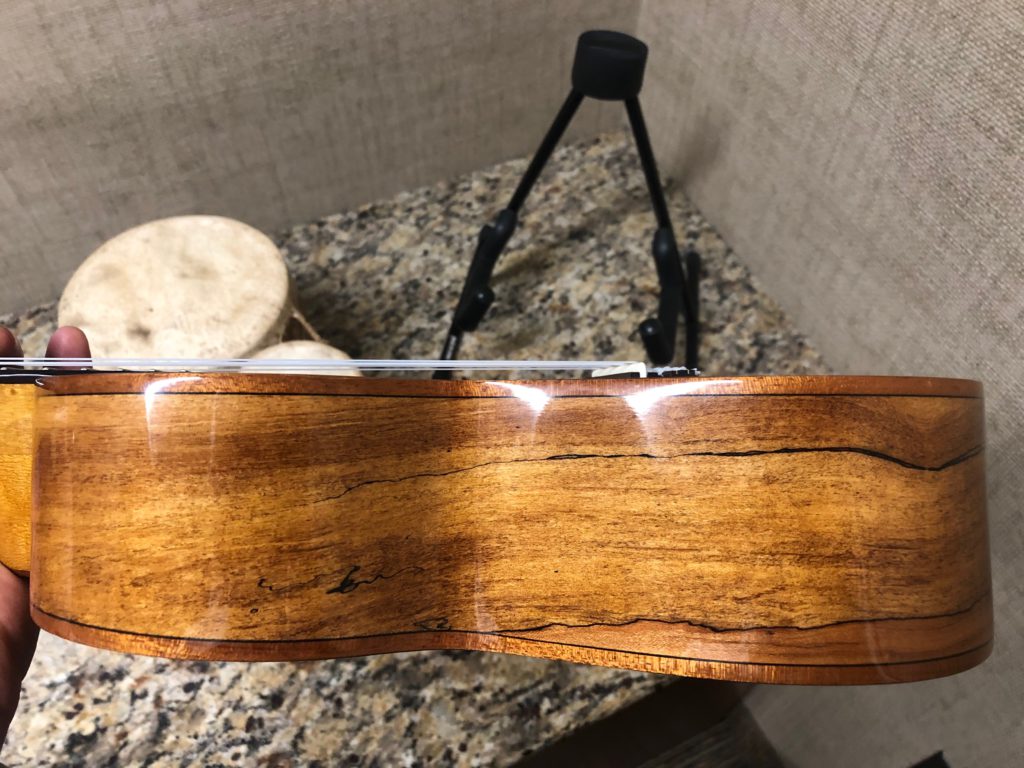
See the difference? It’s pretty obvious, right?? So don’t be fooled by some who are selling this instrument and calling it “flamed Maple”. It’s not. You can see for yourself.
Another way to tell the difference is price: spalted Maple is pretty easy to find, comparatively. It’s just dying Maple trees! And since there are a lot of those in the world at any given time, the price point of the instrument shouldn’t be that high.
But Flamed Maple?? That’s much more rare. To cut a growing Maple open and find the wet, dappling appearance of “flames” inside only happens in about 3 in 100 trees. That’s why we always pay more MONEY for true flamed Maple.
Check out a more detailed description of it in THIS POST by Ed Roman Guitars. Nice research, Ed!!
Science hasn’t figured out yet what environmental conditions cause “flaming” to happen (if it even IS environmental), but one thing’s sure: the better-looking the pattern, the higher the price. The best flamed Maple wood is often priced at 3 to 4 TIMES the cost of normal Maple!!
Which is probably why the striking PRS Electric guitar seen below sold for just under TEN THOUSAND DOLLARS!!!!

With all that flaming controversy behind us though, the thing to really remember about this uke, despite its (to me at least) false advertising, is that it’s really beautiful, classy, unique and an especially tasteful, elegant approach to having fun with ukulele music.
Whatever you wanna call it, that wood is GORGEOUS!!
Hear it!
If we’re talkin’ tone, I’d don’t think I’d be able to find a better-sounding uke in any other brand in this price range. It projects well (for an ukulele!), and charms the listener with its clear, tropical whimsy and un-muddled frequency response.
Because it’s a TENOR ukulele, it’s a few inches bigger than its cousins, the Soprano and the Concert ukes. That means you’re going to get a better bottom end out of it.
Is its bass response like a guitar’s? Heck, no. Too small a body. But FOR A UKE, it really projects well and provides a little more beef than usual.
How ’bout the sustain?
Well, I did a little test of how long my ukes kept ringing after I strummed a chord, and here are the results:
- the Mike Franks Soprano Ukulele: 8 seconds
- the Kohala Baritone Ukulele: 11 seconds
- the Kala Tenor: 14 seconds!!
How ’bout them Hawaiian apples!!
I’m not surprised, since it’s top is made of Spruce wood, which, for centuries, has been the tone wood of choice for soundboards (the top piece of wood)… and not only for ukes, but especially for guitars of all makes and models!
Spruce always provides good volume and strong attack for an instrument’s tone. Plus, whenever you see its clear, bright color and look, remember that a big part of its historical appeal is that Spruce’s tone is known to only improve as years pass, making it a great instrument for the long-term, since it’ll only sound better with time!
Ukuleles as primarily high-pitched instruments don’t have a wide frequency range, but a Spruce top will certainly help all those high notes project better than other more dense, hard woods you could buy for less.
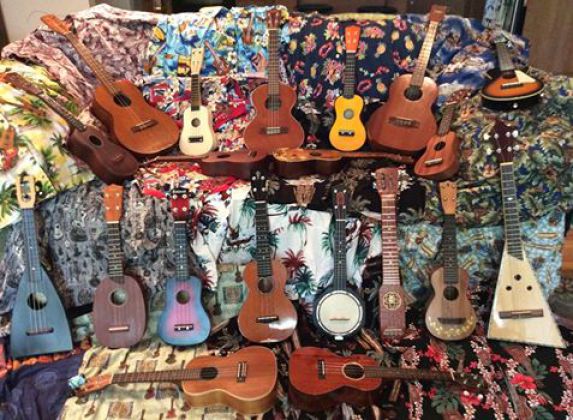
Oh, and they didn’t put a ton of GLOSS on top of the Spruce either, which can deaden the sound. They kept it thin, and I think that’s why the wood “speaks” so well and has such great sustain.
Since electronics are absent in this model, you’ll need to watch who you play with and how. This uke will absolutely give you good volume when playing with other instruments…
… unless they’re electric! Then all bets are off and you’ll need to either install a pickup or, as I do, just put a mic in front of it leading to a P.A. system or amp.
And beware the electric guitar player’s volume knob!! BEWARE!!!! lol
In a coconut shell? This breezy little beach singer will capture the attentions of every surf-craving ear with its effortless sunshiny sounds and songs!!
Tune it!
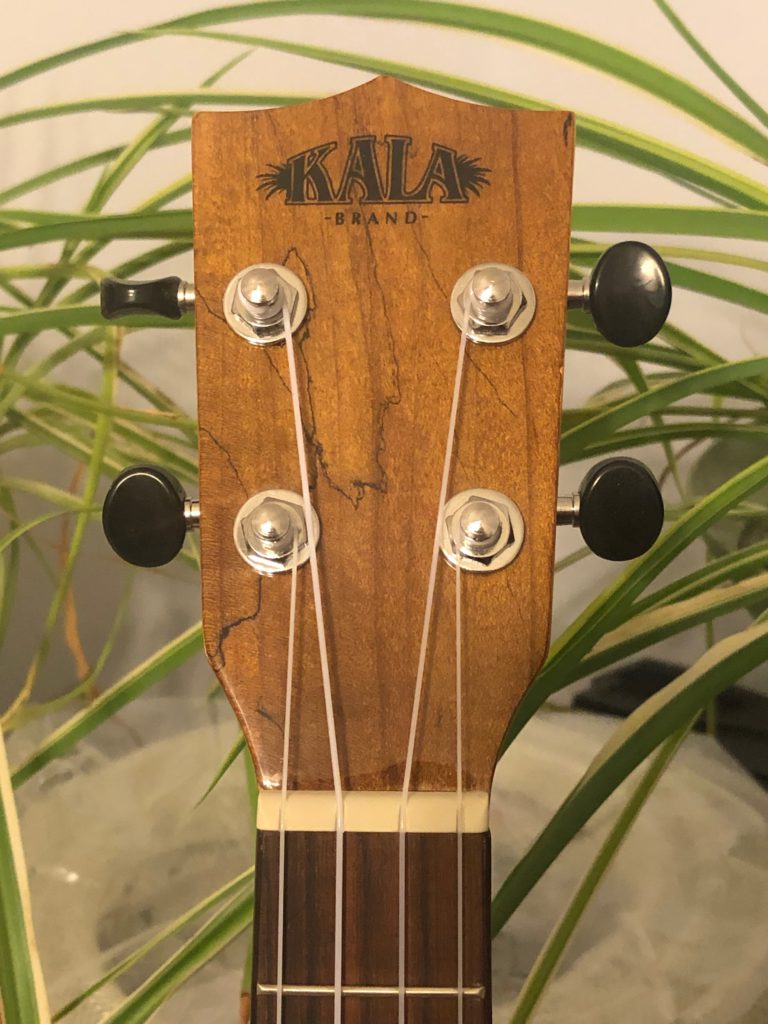
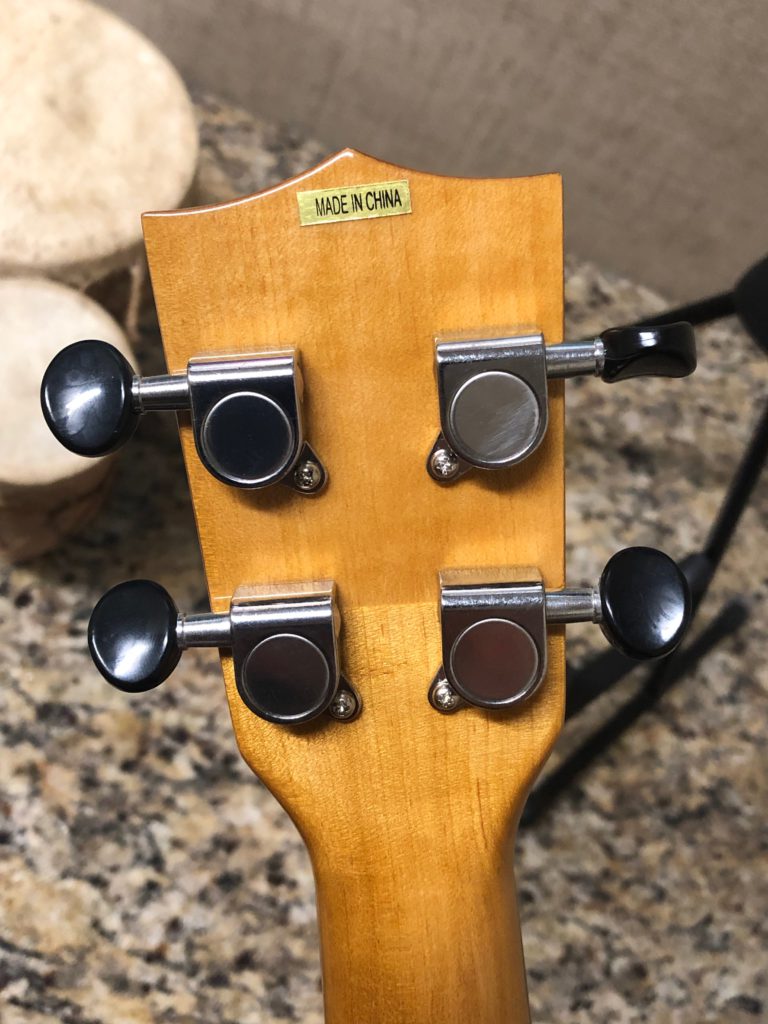
One of the WORST things I’ve found in ukes over the years is the terrible tuning mechanisms. Even in higher-priced models, I’ve played them and within SECONDS, the tuning has changed yet again.
Very frustrating. And not how you want to spend your time playing.
Kala chose well for this instrument: the die-cast chrome tuners they chose for the FMTG really keep it in tune well!
I know this because just about every time I go to play it for a new customer or friend, I don’t have to adjust the tuning at all, and that says a lot.
Nice job, Kala!
Hold it!
One of the really cool things I like about this particular tenor uke is that I don’t need a strap to play it. Two reasons:
- It’s lightweight (unlike, say, a guitar) so it doesn’t want to fall that much, and
- How it rests on my body & it’s shape makes it sit and fit snugly and perfectly against my own voice-strengthening 6-pack.
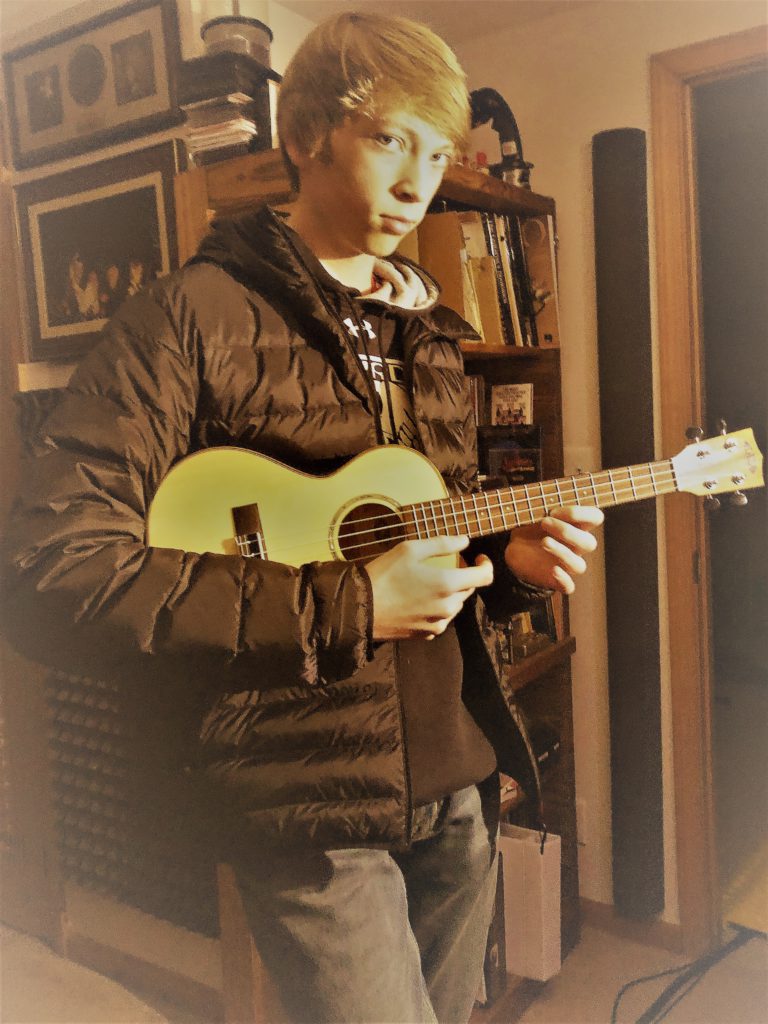
(Well, OK, maybe not quite a 6-pack. I think I can make out, uh… two. LOL)
If you’re an adult player, you’ll be happy to know that tenor ukes tend to have a little more finger space than the smaller ukes.
If you have normal to larger-sized fingers this is a much better choice for you than, say, a Soprano. The fret spaces get smaller as the instruments do.
It can get to be like the “garbage masher” scene in Star Wars if you’re more Chewbacca-sized. 😉
Another addition that sets this particular uke apart from the rest in its price point is the inclusion of Fret Markers on the side of the neck.
Most ukes have these markers on top of the neck, but hardly any do on the side. These little visual reminders really help a beginner to learn about and get quickly to different positions on the neck.
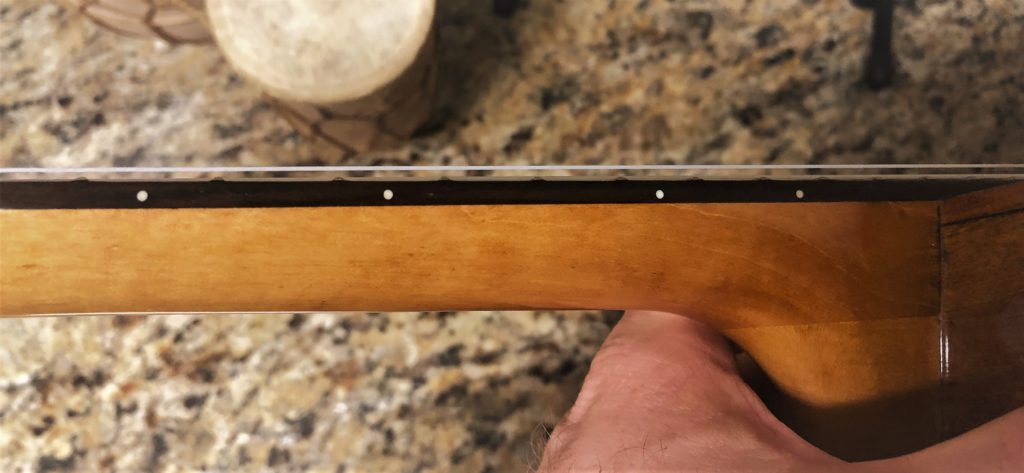
Finally, this puppy came from the factory with a great set up and ready to play. The action is EXCELLENT. Definitely the easiest uke to play that I’ve ever had. Kala obviously were meticulous about the construction and decisions concerning bridge, nut and neck options.
Definitely performance-ready, and with a sunny disposition to boot.
I know a lot of other musicians who could learn from that. LoL
Stand it!

I bought my Uke Stand way back when, before Amazon was the juggernaut that it’s become.
Mine comes from the Met Opera Shop and fits this uke PERFECTLY. It’s nice and snugly held by the arms, but not so much that I have any trouble getting it out. Couldn’t ask for a better fit.
Check that out HERE AT THIS LINK.
These days tho’, Amazon makes it easier, and cheaper. Because your uke doesn’t weigh much, it’s not prone to tip, so a simple stand like the one I use is just fine. Here’s Amazon’s version of it:
Now, if you’re playing live, then you would need something WAY more sturdy. For when that guitar player comes over to adjust his volume knob…
Case it!
If you’re gonna pay anything over $100 for ANY instrument, do yourself a favor and get a good case for it.
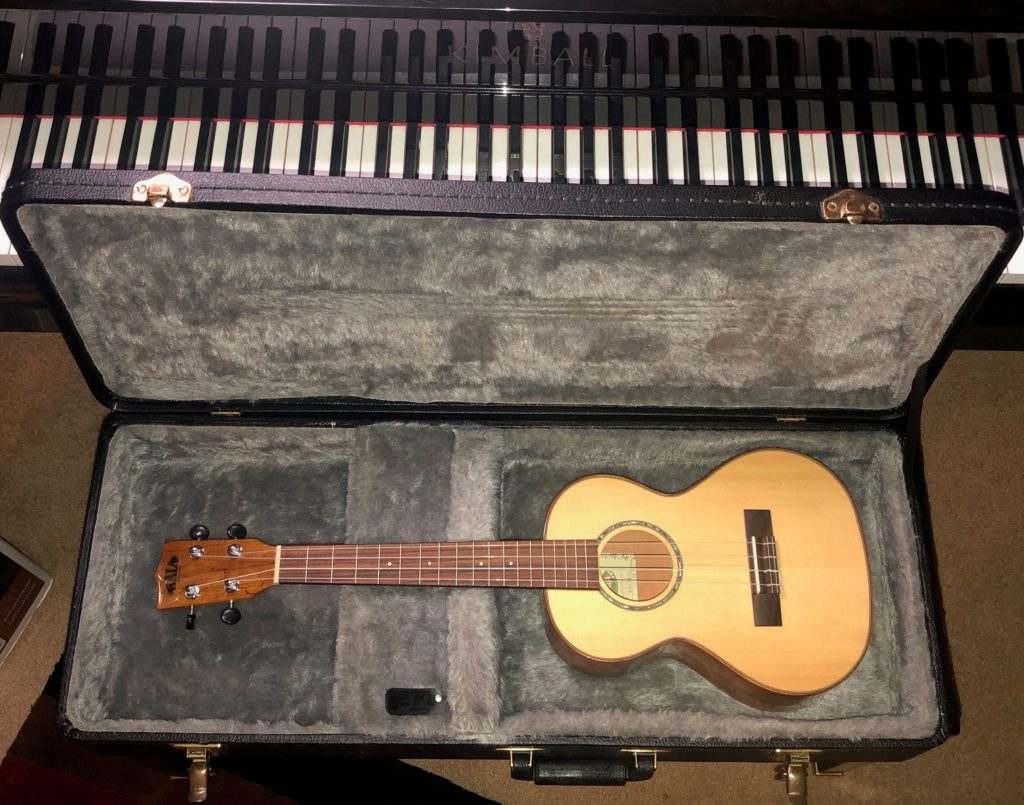
I learned the hard way that a “gig bag” is NOT enough if you’re playing out at all.
(A moment of silence, please, for my Jackson “Dinky” Electric guitar with a broken neck…)
I use TKL brand cases, since they have a lifetime 24/7 warranty program. When you’re touring & gigging, that’s important. If you’re doing that too, check out the TKL WEBSITE HERE.
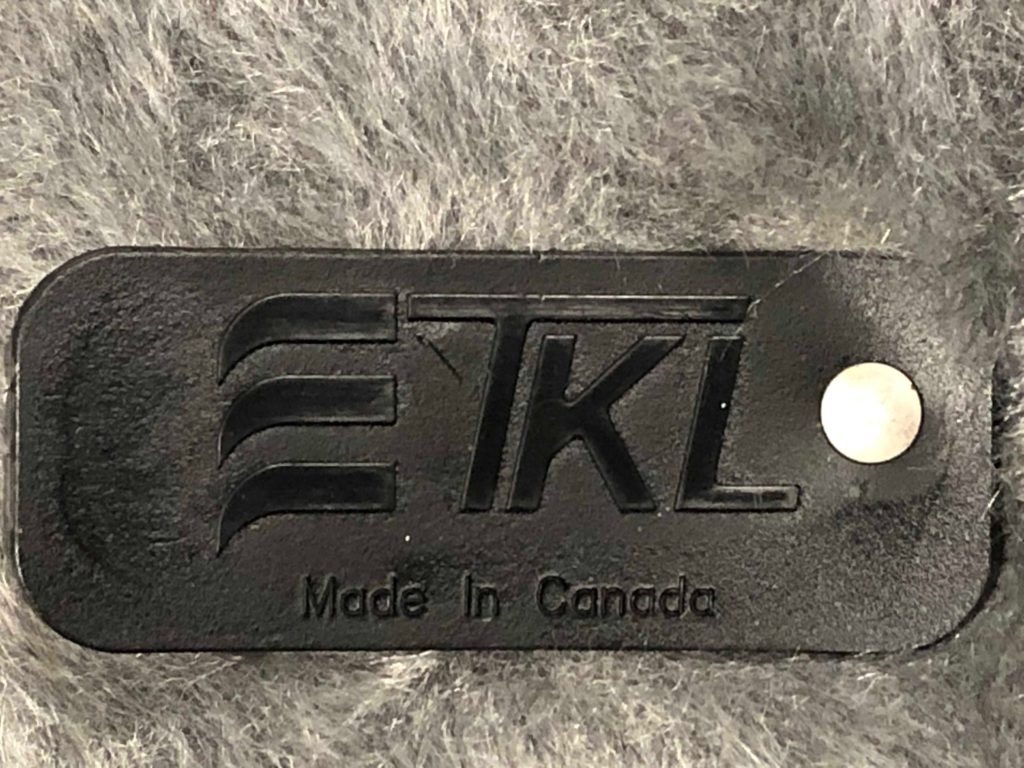
If you don’t anything so industrial, guaranteed and, thus, expensive, then simply go with this “no name” case on Amazon for those of you who do NOT play out on gigs:
And this one by KNOX for those of you who’ve practiced enough such that now EVERYBODY wants to have your tropical flair onstage with them:
Either way, you’ll be protecting your investment. Trust me – in the long run, you’ll be glad you did!
Size it!
This is a Tenor Ukulele, so it’s on the larger end of the spectrum for size.
You can get other options that are smaller (the Concert and the Soprano size) if you really want even MORE of a Hawaiian ukulele sound.
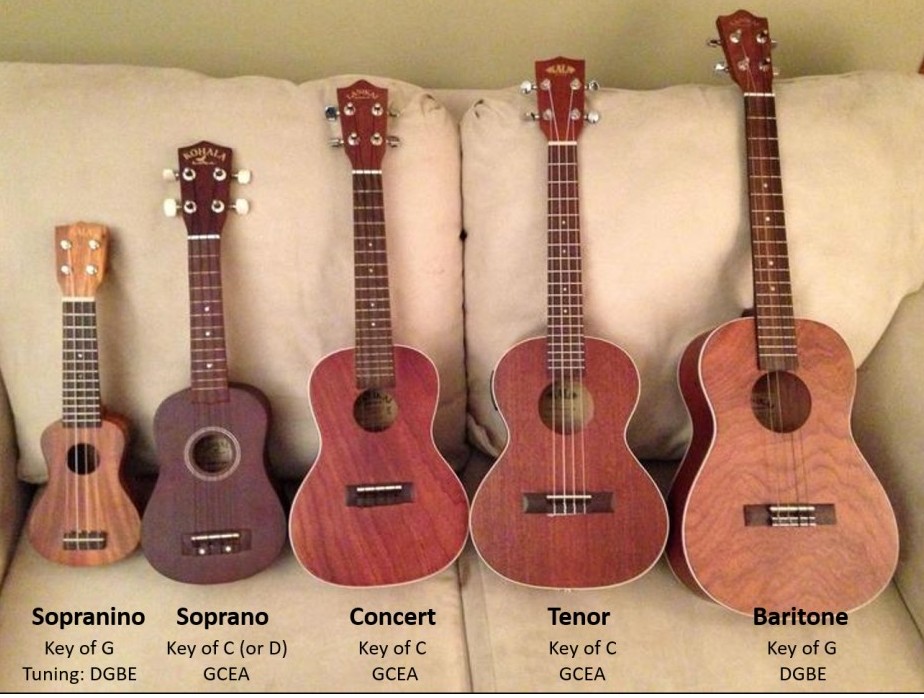
I like the Tenor because it gives you the flavor of a ukulele but also resonates with more lower frequencies to widen the tonal palette over its little cousins.
As always, it’s horses for courses – decide what you’re gonna use it for mostly. If you want that instantly recognizable ukulele sound, get a “Concert Ukulele“.
But if you want something a little less bright, maybe a uke you could use in a band setting more, then a Tenor is a great option.
Or, better yet… be like me and buy ONE OF EACH!! You’ll LOVE THEM ALL!!!! lol
Buy it!
In Hawaiian pidgin, “kala” means money…
I think when it comes to Kala brand ukuleles, “kala” means you’re saving it, not losing it. Kala brand ukuleles are awesome ukes for incredibly reasonable prices and I recommend them whole-heartedly.
Below are links to the places I buy from all the time that I trust implicitly: Amazon and Sam Ash. Since the price is the same for each, just pick your favorite, and soon… you’ll be in strum-happy heaven!
UKE IT!!!
With a full FIVE STARS rating on Amazon by those who’ve purchased it, it’s clear that we have a real winner here in the Kala Ukulele.
Best tenor uke for under $300?? It just might be!
I can certainly vouch for it. Love how it looks. Love how it plays. Smiles when it sounds!
Now I just gotta add some electronics to it so I can put it through a P.A. system on the beach and GET ALL THE PEOPLE DANCIN’!!! LoL
If you’re wanting a fuller-sounding ukulele that is NOT beginner-grade, but still won’t break the bank, the Kala FMTG is a fantastic choice. Get it, get some sun tan lotion, and the world’s beaches are your oyster!
With that, I say “Aloha kakou”, my friends!! Here’s hoping we play, sing and clink cold ones with our toes in the sand somewhere soon!
(And if you wanna show off your 6-pack abs with some tropical flair, well… go for it…

I’ll play my Kala while you flex.) LoL
Now, go… make… sounds!!
Teaj